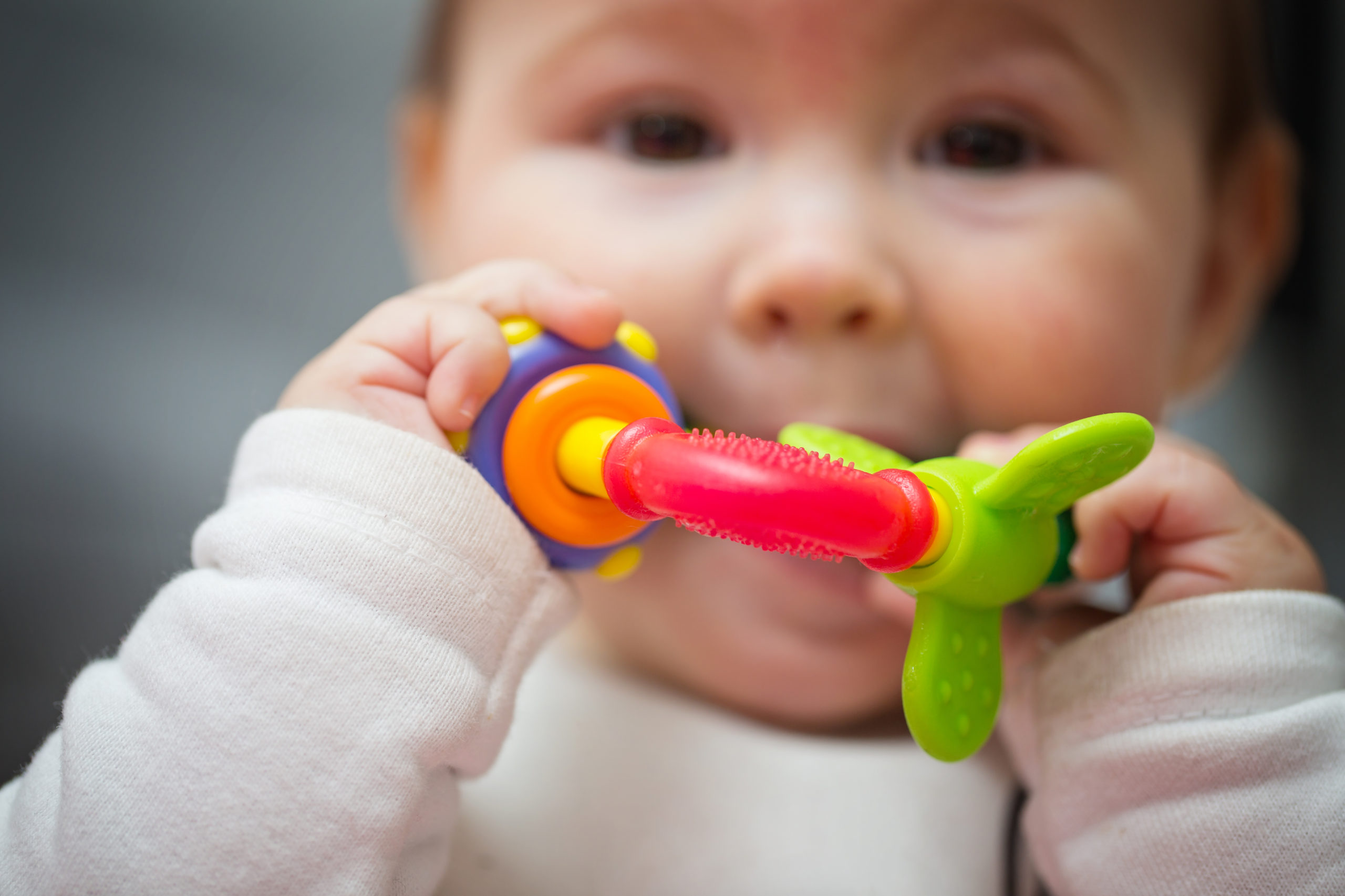By Ani Oganesyan OTR/L
Children use a multitude of their senses to learn about the world. Sometimes they might put food or other items in their mouth. The sensory receptors in the mouth provide them with information about the item, such as texture, size, taste, temperature, shape, etc. Mouthing items, or oral sensory seeking behavior, is typical for babies and infants, and it aids with self-regulation. A commonly seen example of this is the use of a pacifier, which aids babies in calming themselves.
Overall, this is very usual behavior for children under the age of two, but sometime this behavior may continue past the age of two. Children may continue to chew, lick, bite, or suck on non-edible items in an excessive manner. This is referred to as oral sensory seeking behavior. For example, a child might be chewing their shirt collar, biting their nails, putting various items in their mouth that they found in the on the floor, and sometimes eating non-edible foods. They may bite others, grind their teeth, or make an abundance of noise with their mouth.
In addition to sensory receptors in our mouths, we also receive proprioceptive input from our jaw when we bite down and chew on foods. This input is feedback from our muscles and joints. Sometimes children do not process information from their oral sensory system efficiently, and therefore engage in oral sensory behaviors. They may need additional oral motor input. Telling children to not mouth items will be ineffective, as they may have a sensory need they are trying to meet.
Below is an example of a child we provided intervention to during occupational therapy sessions.
Robert is a 3.5-year-old boy who tends to place nonedible items in his mouth throughout the day. Robert’s second molars came in a few months ago, and he is done teething. Whenever Robert is playing with toys, he will often bring the toy to his mouth to bite or chew on. Sometimes Robert picks up random items from the floor and places them in his mouth. Parents have always been concerned about this, but do not know what to do. They are worried he may choke on an item, or the items will damage his teeth. They have limited the number of small toys in the house and have tried to tell Robert not to place items in his mouth, but he continues to do so anyway. To understand this behavior better, parents must identify the “why” behind Robert’s oral sensory seeking behaviors.
– Is there a pattern to when he does this?
– Is there a certain time of day this occurs more often?
– Is he doing this during times of anxiety?
– Is he frustrated, or happy?
– Is he overstimulated and doing this to self-regulate?
Once the “Why” is better understood, then therapists can work alongside parents to introduce activities to decrease Robert’s desire to mouth non-food items and assist with sensory/emotional regulation. Several examples are:
- Oral motor activities: blowing bubbles, drinking from straw, etc.
- Vibration (vibrating toothbrush, Z-vibe)
- Chew toys
- Musical instruments (harmonica, whistle)
- Breathing exercise through mouth and nose
- Heavy work (pushing/pulling)
- Yoga
- Sucking on items: lollipop, frozen fruit
- Chewing/Eating crunchy food
Many of these activities will help the oral sensory system by either encouraging calm behavior or increasing alertness. The therapist will collaborate with the family to provide education on a combination of strategies that may be implemented at home.




